Buying Guide Bentley Continental R
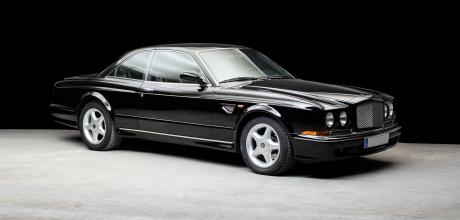
It bore a great weight of history on its broad shoulders – the Continental name and a decent shout to be the Blower Bentley for the 1990s. With prices spread across such a vast range, what should we look for?
WORDS: WILL HOLMAN
PHOTOGRAPHY: KELSEY ARCHIVE / RM SOTHEBYS
BUY A CONTINENTAL RHANDBUILT SUPER-COUPE IS NOW AMAZING VALUE
Choosing the leanest and meanest of the SZ generation
The first Bentley since 1965 to feature a bodyshell not shared with a Rolls-Royce was tasked with reviving the company’s fortunes and sold very well, despite being the most expensive car in the world at the time. Choosing the right car for you, and understanding the wide spread of price points in the market, begins with understanding the many variants Bentley offered between 1992 and 2003.
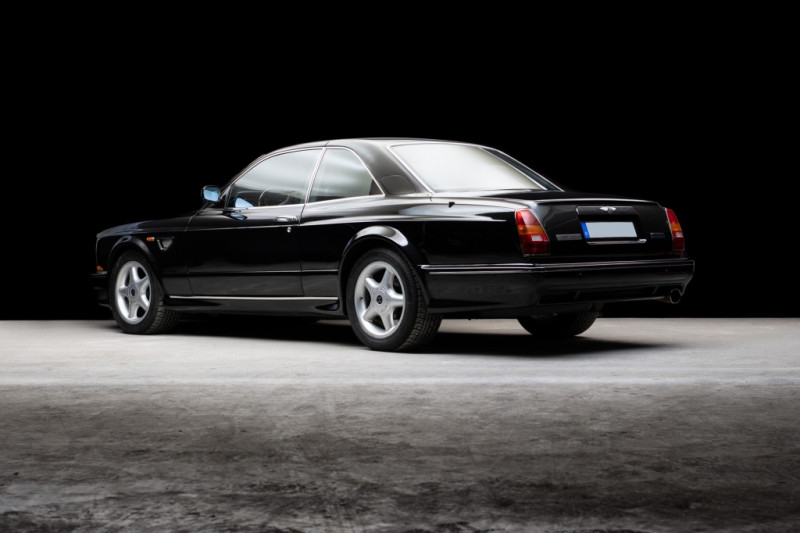
MODEL HISTORY
This is a tale of number ones. Not pop songs, but firsts claimed by 1991’s Continental R. The most expensive Bentley to date. The most powerful, and the fastest. The first to have a gear selector on the transmission tunnel, and without doubt the most successful. Building on the success of the Mulsanne Turbo, 1991’s Continental R was revealed at that year’s Geneva show, which it took by storm, much to the annoyance of Mercedes, who fully expected its new W140 S-Class to be the star.
But although the bodywork was all new, the Continental’s underpinnings were similar to the Turbo R, and the 325bhp L-Series V8 remained at the heart of the matter. In common with the four-door siblings from the 1992 model year, the new car used a four-speed electronically-controlled gearbox from GM, used in, among others, the Jaguar XJ12, Aston Martin DB7 and Hummer H1.
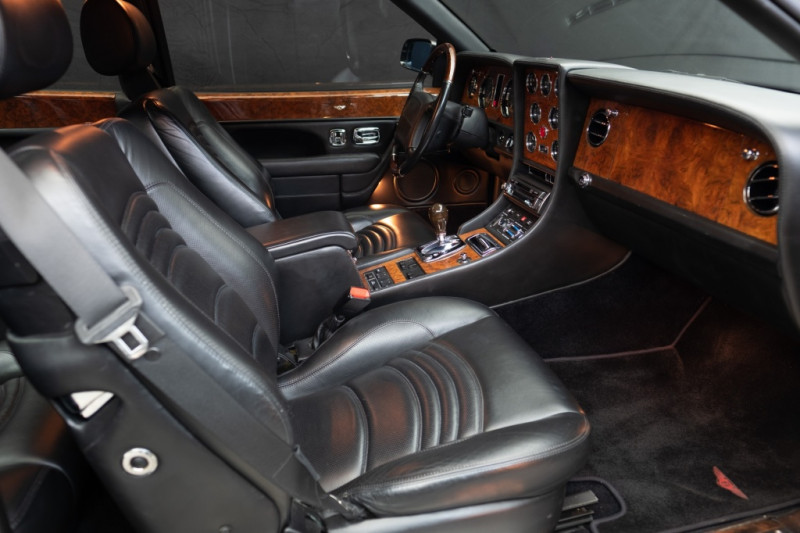
With 450lb-ft of torque available between 2000 and 4000rpm, the Continental R could accelerate to 60mph in just 6.6 seconds, despite weighing in at a hefty 2420kg, and would happily chase S-Class Mercs all the way up to 145mph on the autobahn. All this for just £178,000 at launch. By 1994 that ticket had climbed to slightly more than £180,000, but power and torque also went up, the latter to an oak-felling 500lb-ft. This was achieved with help from Cosworth, who reworked the V8’s cylinder heads to great effect. In the same year the wheels increased in diameter to 17 inches with a new seven-spoke design.
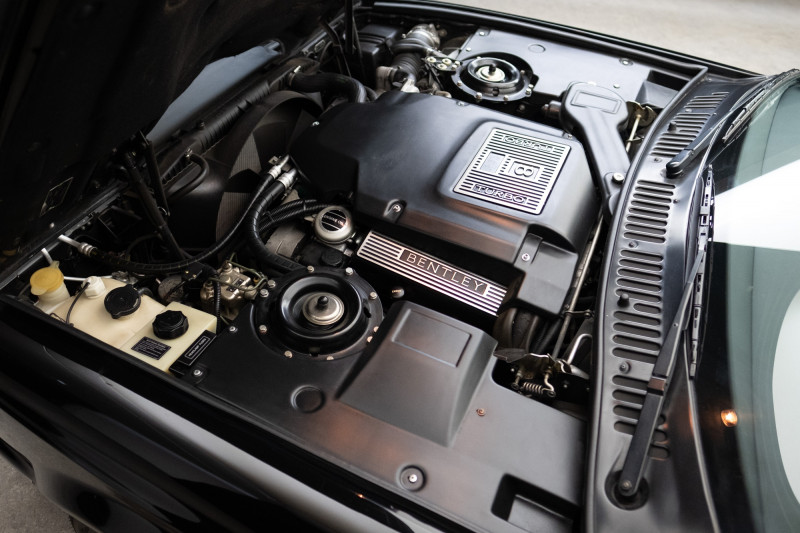
For the 1995 model year only, the Continental S was available as a limited-edition performance model with a charge-cooler system added to reduce intake temperatures on the force-fed engine. Only 37 were produced and offered to established Bentley customers, the late Alan Clark MP being one of them. In 1996 the Continental R got a long list of revisions, the most notable of which was a new standard fitment of the charge cooler. At the same time a Zytek engine management system took over from the previous Bosch unit, which gave the car improved throttle response and even managed a slight increase in fuel efficiency. Power – for the first time officially quoted by Bentley – rose to 385bhp and torque to 550lb-ft, another first for the Continental R as this was more than any other production car at the time. We’re guessing this is why the policy of performance non-disclosure came to an end. The sprint to 60mph was now achieved in fewer than six seconds, and top speed exceeded that of German machinery by five miles an hour, which was limited to 150mph. New 17-inch alloy wheels helped justify the list price of more than £187,000, as did a new tilt adjustable steering column.
In the same year Bentley Launched the Continental T, with 102mm less in the wheelbase and a slightly more powerful engine. The extra 15bhp was nice but the torque rise to 590lb-ft was positively naughty, and allied to the lighter shell led to an appreciable performance hike. To cope, larger front discs with ABS as standard were fitted. Inside, a turned alloy dash distinguished the T, and a push button start accentuated the performance aspect. Top speed was now a ballistic 170mph. All this came at a price – 20% more than the R. In 1998 traction control became standard (thank goodness) and the front seats from the Azure convertible version now went into the fixed head too – easily spotted as the seat belt is an integral part of the seat itself. These cars also have small mesh grilles below the headlights, a laser cut mesh radiator grille as standard and small tweaks to the front and rear bumpers. In the same year Bentley built just six Continental R California Editions, with wide bodies and 420bhp engines.
A year later the Continental R Mulliner model range appeared, with a wider body, bigger wheels and a Continental T engine, allowing the fullsized coupé to get to 60mph in just 5.6 seconds. Between 1999 and the last cars built in 2003, Bentley offered various special models via its Personal Commission programme, including the Le Mans, Continental R 420 and Millennium. Yet more power – and rarity – means they’re in demand. The Continental R finally ended production in 2003, the last of all the models based on the Rolls-Royce SZ platform, and the end of an era in many ways.
BODYWORK AND EXTERIOR
We chatted to the very amiable and extremely knowledgeable Simon Worthington of Phantom Motor Cars in Farnham, Surrey, to find out what to look for when buying a Continental. The first thing he pointed out was that a number of parts are hard to come by these days. ‘Bentley, in their wisdom don’t really maintain parts supply as the cars are so old.’
Not a good start. Rust, of course, is the thing you want to avoid at all costs, especially now that new panels aren’t available. So look for corrosion in the lower panels, especially the sills, then inspect the tops of the doors around the area of the stainless steel finisher and the rubber seal – rust gets hidden by the trim. ‘That chrome trim holds the water and then the door rusts’, says Simon. ‘You can’t get any parts so we have to make our own repair panels. And even when doors were available, they were £3000 each. Also look for corrosion on the boot lid’s back seam, where the rear lamp units are.’
Check the lower front wing areas for rot too. Moving on to the car’s underside, the subframes go rusty – especially on cars left parked outside near the sea, or ones that have seen lots of salty roads. ‘We had one car that was left up at Lake Geneva, and that was really bad,’ says Simon. ‘The subframes themselves are made of such thick steel that you don’t generally find holes, but they look awful. We strip the car, remove them, sandblast them and repaint them.’
This obviously makes them not only look pretty again but prevents further corrosion. Budget £4000 at each end for the job though. Bentley didn’t really take rust proofing seriously back in the day, says Simon. ‘They splashed a bit of Waxoyl in the sills from new, but that was it. If we find a really nice car that’s rust free, we get it up on the ramp and inject wax everywhere.’
Look out for cracked or damaged light lenses. The good news is you can get front ones – headlights and indicators. The bad news is the inners are £300 each, which makes the outers look a bit of a bargain at £200. The worse news is that rear lamps are not available. And if the door seals are split don’t imagine it’s an easy fix. They were around £200 each, but they’re no longer available. ‘The Continental R Mulliners are wide-bodied cars and have larger wheels and much more unsprung weight as a result,’ says Simon. ‘They look great but they just don’t drive as well as the standard cars. We looked at having some magnesium wheels made for the Mulliner cars but a wheel set would have been £15,000.’
SUSPENSION AND BRAKES
‘The rear suspension doesn’t cause much of an issue except that the rubber bushes age and that throws the camber and toe settings out of alignment. In theory these aren’t adjustable, but we can move it around a bit to compensate and get it all set up on the laser alignment rig’, says Simon. Thankfully the bushes don’t really wear out, they just settle, hence the need for the realignment work. ‘The biggest issue is the rear springs. The cars should have 50 percent spring input and 50 percent hydraulics, and this needs to be kept balanced. But the springs tend to settle, and some people just compensate by adjusting the torque arm on the self-levelling valve underneath the car. But if you place too much emphasis on the hydraulics then the ride becomes very hard – you can’t compress hydraulic oil, obviously.
So if the car is hard at the back then someone has compensated for weak springs by effectively upping the hydraulic pressure. You either need new springs or the ones that are on there need shimming. At this age almost all these cars now need this work. ‘On the front suspension the springs also get compressed – look for a low ride height. Again, the answer is to shim the springs. When the cars were new they came with a height/spring rate figure and you’re supposed to shim them accordingly. We have a spring chart that we use. If you don’t get the right height, it changes the camber, caster and toe. Often we fit new bushes then redo the camber and caster settings. You can easily tell if a car needs this work doing as it will wander into the kerb. There’s also a modification to the settings we can do that gives the car more caster on the front to alleviate the steering sensitivity. After this we think the cars probably drive better than when they were new. ‘One thing we notice on a lot Continentals is vibration problems. It’s the propshaft – the car shudders.
Some are so bad you get a droning noise at motorway speeds, and a lot of owners sold the cars because of it. The propshaft isn’t worn out – the universal joints are usually fine, they just weren’t balanced properly. ‘The brakes are pretty good and don’t often give problems if they’ve been well maintained. But the seals in the engine mounted brake pumps are supposed to be changed every seven or eight years.’ Unfortunately this isn’t a cheap job because the pump is buried under a lot of parts and sits in the vee of the engine. All this kit needs removing to get to the pump, resulting in a £2000 bill.
The brake pressure then goes to the accumulators mounted low down on the engine. ‘We’re noticing that a lot of the accumulator valve bodies are now leaking. They’re steel units and they corrode so we’re rebuilding a lot valve bodies’. ‘If you find a rusty car you can bet it will also have rusty brake pipes’, says Simon. ‘The originals are Bundy tubing as used by Citroën. It’s a steel pipe with a plastic covering. We replace the pipes with Bundy tubing but we find a lot of places use copper. These brake systems run at 2600psi, so we really wouldn’t recommend this. Caliper seals are supposed to be changed every seven years – they will last a bit longer but not much. Part of the service is to pull back the caliper dust seals and look for dampness. This is part of the reason that a total brake rebuild could cost £5000. We remove all the calipers, clean them up and fit all new seals to them.’
Some of the larger brake discs are not available from Bentley, and the Final Series Cars (2003) had larger Alcon brake discs and upgraded calipers. You can’t get Alcon discs any more but there are aftermarket replacements. Standard discs are £700, Alcons £1200. ‘Rear brake discs are an integral part of rear hub assembly so take six hours a side to change. The rear discs themselves are £300, but generally we’d replace the rear bearings and seals at the same time,’ says Simon. Budget £3000 for this job.
ENGINE AND GEARBOX
If only everything in life was as reliable as an L Series V8. Well, whatever Volkswagen might say, the long lived powerplant is a strong, dependable unit. ‘The engines don’t have any real mechanical issues as long as they’re looked after’, says Simon. ‘Turbos last forever. They’re water-cooled, specified for Mobil 1 oil, and they give no problems. The weak point is the rocker area, which wears, at 70-80,000 miles, and the engine starts to sounds a bit tappety. There are “elephants’ feet” on the rockers – you can take these out and replace them, at a cost of £3500. But generally, apart from slight oil leaks from the sump gasket, crank seals, front timing gasket and rocker gaskets, the engines are pretty good.’ It’s a similar story with the GM 4L80E four-speed automatic gearbox too. ‘If they’re properly serviced they’re reliable, and will last up to around 140,000 miles,’ says Simon. Proper servicing according to Bentley is a fluid change every year, with a fluid and filter change every two, but with many cars doing minimal miles this is hard to justify.
INTERIOR
Most seat ECUs will have been rebuilt by now. The rechargeable battery in them leaks and wrecks the circuitry. They last around ten years or so but if the car is used regularly, they fare better.
‘They get their supply from the car’s main battery’, explains Simon, ‘and if the car’s not used very often the battery in the module will fail.’ Alarm control modules can also cause a problem at or around the 10 year mark, and a replacement is £700 fitted. As for the interiors themselves, look out for sun damage. ‘Leave your car in the sun and the leather on the dash shrinks and pulls away,’ says Simon. ‘Plus the lacquer on the wood suffers and comes loose.’
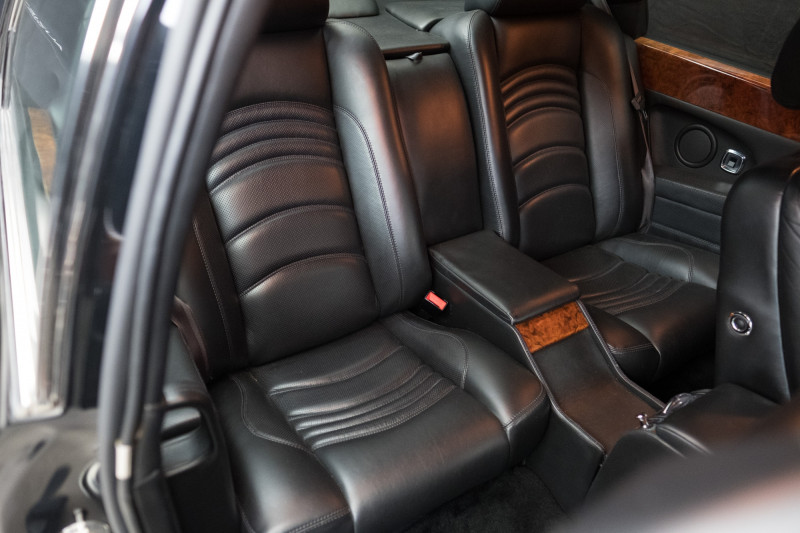
It’s a bargaining point, but it’s all costly to fix. The leather upholstery itself is pretty durable but needs regular cleaning and applications of hide food to keep it looking good. Switchgear is also reliable, but can suffer from underuse. One common problem is that the push button rear foglamp won’t work. ‘They often fail an MoT because of this’, says Simon, ‘but we find that repeatedly pushing the button will usually get it working again. Electric window faults should be avoided — the weakest links are the runner seals on the glass. The fronts wear out and aren’t available, so we have to take a back section and make a repair using that’.
WHAT TO PAY
As a guide, you can expect to pay the following for a good example of each variant, with average mileage for the year: £60,000 for a standard-bodied Continental R, £85,000 for the Continental T and the Mulliner, perhaps £80,000 for an Azure and £90,000 for an SC. The cheapest cars – those early Continental Rs you see for £30,000 – need not be a disaster, you just need to have your eyes open to possible expenditure to bring them up to scratch. Likewise, six-figure sums are achieved for the best low-mileage examples of the soughtafter variants. So which to choose? ‘Pay as much as you can,’ says Simon. ‘The better cars are the later cars – ’98 onwards. They barely changed after that point and Bentley got everything right by then.’
‘On the front suspension the springs also get compressed – look for a low ride height.’
Continental T's reduced wheelbase is quite subtle.
Doors are heavy and sumptiously trimmed — is corrosion hiding behind exterior trim? Engine-turned dash panel is in Conti T is striking but catches sun glare.
Sun can damage dash tops and wooden door cappings Bargain over clouded or cracked lacquer — inspect with care.
AZURE AND CONTINENTAL SC
The Continental SC (Sedanca Coupé) was a 1999 limited production version of the Continental T with a removable roof panel over the front seats. A total of 79 cars were built, six of them with the Mulliner package. Forty-eight of these cars were left hand drive. ‘Unfortunately, the removable roof panels have a three-dimensional seal that never worked well and is now unavailable,’ says Simon Worthington. ‘The cars just fill up with water. SC equals soggy carpets! And the sills rot out as a result. They look absolutely great but unless you live in the south of France they’re best avoided.’ The Azure is the true convertible version of the Continental R, and was produced between 1995 and 2003. ‘They were never designed to be a convertible and cutting the roof off left the shell with a fair amount of flex and scuttle shake,’ says Simon. ‘If you buy the Mulliner wide body version the combination of the increased unsprung weight and the body flex isn’t great. We’re seeing a lot of issues on the hood hydraulics, with seals failing. There are eight rams – six at the rear and two at the front.’ These rams cost £100 each. Some of the nylon pipework can fail on cars from hot climates. ‘You can also get problems with position switches and potentiometers, and then the roof just stops. You need a proper diagnostic test kit to tell where the problem is.’
SC ideal for the south of France, says our expert.
More waterproof than an SC? Quite possibly! But hood mechanisms fail expensively Azure's side profile reveals a sleek and successful convertible conversion.
SC's targa panels fit under tray in false boot floor.
Rust, of course, is the thing you want to avoid at all costs, especially now that new panels aren’t available.’
With all that performance, look for high quality W or Y-rated tyres Well-proven Turbo installation just needs attentive servicing to last and last.
Wide arches of Continental T make it stand out Ensure there's no corrosion in the rear seam of the boot, near lamp units. Wide arches of Continental T make it stand out.

